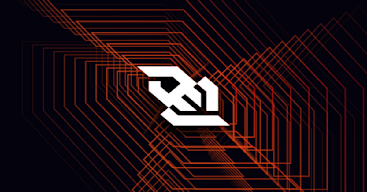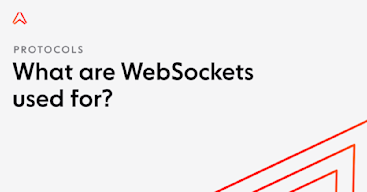WebSockets are a well established standard for low-latency bi-directional communication on the web. But they’re not the only option. Depending on your application’s requirements – such as network environment, messaging directionality or resource constraints – other protocols might be better suited or useful as fallbacks.
In this article we’ll explore a range of WebSocket alternatives, explain their use cases and help you decide when and why you might choose each. We’ll also cover the architectural considerations beyond protocol selection and introduce how Ably helps teams handle realtime complexity at scale.
Five protocols that are alternatives to WebSockets
1. Server-Sent Events (SSE)
SSE is a unidirectional protocol that allows servers to push updates to the client over a single long-lived HTTP connection using the text/event-stream MIME type.
Pros:
Easy to implement
Native support in modern browsers
Built-in reconnection support
Cons:
Only supports server-to-client communication
Not suitable for use cases that require bi-directional messaging
Limited browser support on Internet Explorer and some older platforms
Ideal for: Live newsfeeds, real-time dashboards, notifications
2. HTTP Long Polling
Long polling emulates realtime communication by having the client repeatedly request updates from the server. The server holds the connection open until new data is available then the client immediately opens a new request.
Pros:
Works everywhere (broad compatibility)
Easy to implement using standard HTTP infrastructure
Cons:
Higher latency and network overhead
Doesn’t scale efficiently for high-throughput apps
Can be more taxing on servers under heavy load
Ideal for: Legacy systems or environments with limited protocol support
3. MQTT
MQTT (Message Queuing Telemetry Transport) is a lightweight, publish-subscribe protocol for constrained devices and low-bandwidth networks.
Pros:
Very low overhead — ideal for IoT
Supports retained messages, last-will messages and QoS guarantees
Efficient for mobile and embedded environments
Cons:
Not natively supported in browsers (requires additional tooling)
More common in backend and device-client use cases
Limited payload size and features compared to full protocols
Ideal for: IoT, telemetry, sensor networks, mobile apps in unreliable networks
4. WebTransport
WebTransport is a newer protocol that allows multiplexed, bi-directional communication over HTTP/3. It aims to address many of the use cases currently covered by WebSockets, with better transport-level capabilities.
Pros:
Built on HTTP/3 and QUIC — supports multiplexing and lower handshake overhead
Better reliability and congestion control
Cons:
Still experimental (as of 2025), limited browser and server support
Complex to implement and troubleshoot
Ideal for: High-performance, modern web apps — once support matures
5. gRPC (Streaming)
Overview:
gRPC supports bi-directional streaming using HTTP/2, typically for communication between backend services. It’s efficient, strongly typed and integrates well into polyglot microservice ecosystems.
Pros:
Great for internal backend systems
Supports multiplexing and streaming via HTTP/2
Language-agnostic and auto-generates client/server code
Cons:
Not suitable for browser-based real-time use cases
Steeper learning curve and infrastructure complexity
More focused on RPC patterns than messaging
Ideal for: Backend microservices, realtime APIs within distributed systems
WebSocket alternatives compared
| Protocol | Direction | Transport | Built-in Reconnection | Message Ordering | Browser Support | Ideal For |
|---|---|---|---|---|---|---|
| WebSockets | Bidirectional | TCP | ❌ | ❌ | ✅ Broad support | Chat, gaming, collaborative tools |
| SSE | Server → Client | HTTP | ✅ | ✅ | ✅ Modern browsers | Notifications, live dashboards |
| HTTP Long Polling | Server → Client | HTTP | ✅ (manual) | ❌ | ✅ Universal | Legacy systems, basic realtime needs |
| MQTT | Bidirectional | TCP | ✅ | ✅ | ❌ (requires workaround) | IoT, telemetry, constrained devices |
| WebTransport | Bidirectional | HTTP/3 (QUIC) | ✅ (spec dependent) | ✅ | ⚠️ Limited | High-performance browser apps (future) |
| gRPC (Streaming) | Bidirectional | HTTP/2 | ✅ | ✅ | ❌ (backend only) | Service-to-service APIs, microservices |
When and why to use a WebSocket alternative
WebSockets are powerful but different protocols offer tradeoffs for different environments or requirements:
SSE is simpler and better when you only need server-to-client.
Long polling is useful in legacy systems where newer protocols aren’t supported.
MQTT is great for constrained or low-bandwidth environments like IoT.
WebTransport is promising for high-performance browser apps as HTTP/3 adoption grows.
gRPC is good for backend-to-backend streaming.
Sometimes you don’t need to replace WebSockets entirely but rather supplement them with fallback protocols to improve resilience or compatibility - or use them in combination.
For example, if you’re developing a video conferencing solution, WebRTC is a great option for sending audio and video data between peers. In this scenario, WebSocket complements WebRTC, and is frequently used as a signalling mechanism for WebRTC peers.
Another example: due to its lightweight design, MQTT is an excellent choice for collecting telemetry data from IoT sensors. However, if you want to use this data to power realtime dashboards that can be monitored in a browser, MQTT is unsuitable, as it’s not supported in browsers. What you can do is send the data to browsers over WebSockets. That’s why many MQTT brokers nowadays also support WebSockets (or MQTT over WebSockets).
Beyond protocols: Delivering realtime at scale
Choosing a protocol is just the start. Building a robust realtime experience also means solving for:
Message delivery guarantees and ordering
Auto-reconnect and connection state tracking
Presence and occupancy awareness
Message history and replay
Load balancing and global scalability
Observability and failure handling
These concerns often force engineering teams to build additional infrastructure around low-level protocols as the application grows.
Ably is a realtime platform that provides reliable, low-latency messaging using WebSockets by default, with intelligent fallbacks to HTTP-based transports when needed. From a developer’s perspective, Ably offers a consistent API and a global edge network that ensures message delivery, ordering, and client connection state tracking across regions.
Rather than replacing WebSockets, Ably helps developers scale beyond them—eliminating the need to manage protocol behavior, build reconnection logic, or worry about infrastructure overhead.
Explore how Ably compares to working directly with WebSockets
Recommended Articles

The challenge of scaling WebSockets [with video]
Learn how to scale WebSockets effectively. Explore architecture, load balancing, sticky sessions, backpressure, and best practices for realtime systems.

Pros and cons of WebSockets
Discover the advantages and benefits WebSocket brings to the table, as well as its disadvantages and limitations.

What are WebSockets used for?
Learn the answers to questions like: What kind of use cases are WebSockets best suited for? Which companies use WebSockets in production?

